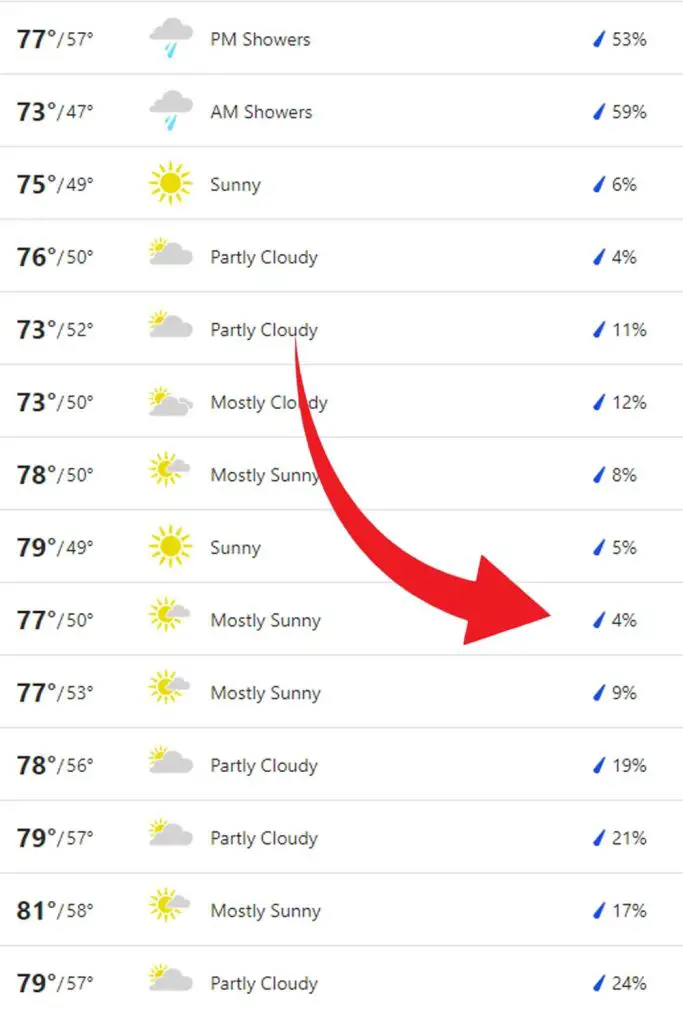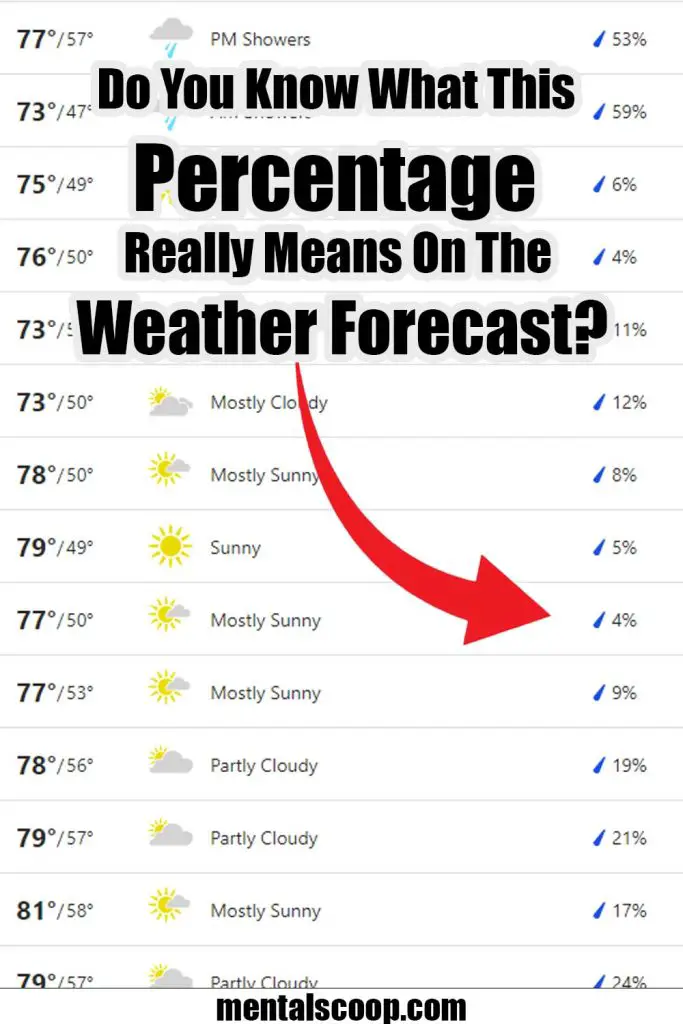Do You Know What This Percentage Really Means On The Weather Forecast?

Weather forecasts are an integral part of our daily lives. We check them before heading out, plan our vacations around them, and even make significant decisions based on what they predict. Yet, amidst all the colorful icons, numbers, and symbols on the screen, there’s one percentage that often leaves us puzzled. In this article, we’ll delve deep into the mysteries of that percentage on the weather forecast and help you decipher what it truly means.
Understanding Humidity
To begin our journey of understanding weather forecasts, let’s first decode the enigmatic percentage: humidity. Humidity is a measure of the moisture content in the air. It tells us how saturated the air is with water vapor. This percentage is crucial as it can significantly impact our comfort and even our health.
Relative Humidity
The percentage displayed on weather forecasts is usually the relative humidity. Relative humidity is the amount of water vapor present in the air compared to the maximum amount the air can hold at a given temperature. For example, if the relative humidity is 50%, it means the air contains half the water vapor it could potentially hold at that temperature.
The Role of Temperature
Temperature plays a pivotal role in determining relative humidity. Warmer air can hold more moisture, so if the temperature drops while the amount of moisture remains constant, the relative humidity increases. Conversely, when the temperature rises, the relative humidity decreases, even if the actual amount of water vapor in the air remains the same.
Dew Point: The Critical Threshold
To understand the comfort level and the likelihood of precipitation, it’s essential to consider the dew point. The dew point is the temperature at which the air becomes saturated, and condensation (dew) forms. When the temperature reaches the dew point, the relative humidity is 100%. If the temperature falls below the dew point, dew, fog, or even rain can occur.
Comfort and Humidity
Relative humidity greatly influences our perception of comfort. High humidity can make hot days feel even more oppressive, as our bodies struggle to cool down through evaporation. On the flip side, low humidity can make cold days feel even colder, as our skin loses moisture more rapidly.
Impact on Health
Humidity levels can also affect our health. Extremely high humidity can be challenging to tolerate, causing discomfort and potential health issues, especially for those with respiratory problems. Conversely, very low humidity can lead to dry skin, irritated eyes, and respiratory issues as well.
Predicting Rain or Fog
Understanding humidity percentages is crucial for predicting weather patterns. When the relative humidity approaches 100%, it indicates that the air is nearly saturated with moisture. This is a strong indicator of possible rain, fog, or other forms of precipitation, depending on temperature and other factors.
Fog Formation
Fog, in particular, is closely tied to humidity levels. When warm, moist air meets a colder surface or air mass, it can quickly reach its dew point and create fog. So, a high humidity percentage, often seen in the early morning or near bodies of water, can lead to foggy conditions.
Impact on Agriculture
Farmers pay close attention to humidity levels because they can affect crop health. High humidity can promote the growth of mold and mildew, which can damage crops. Conversely, low humidity can lead to excessive evaporation, drying out soil and potentially harming plants.
Impact on Home Comfort
Understanding humidity is also essential for maintaining a comfortable home environment. High indoor humidity can make your living space feel stuffy and promote the growth of mold and mildew. Conversely, low indoor humidity can lead to dry skin, respiratory issues, and damage to wooden furniture and floors.
Controlling Indoor Humidity
To ensure indoor comfort, it’s essential to control humidity levels. This can be achieved through the use of humidifiers or dehumidifiers, depending on whether you need to increase or decrease humidity. Maintaining optimal indoor humidity levels can improve your overall well-being.
The Role of Weather Forecasters
Weather forecasters use humidity data to make predictions about upcoming weather events. By monitoring humidity levels in the atmosphere, they can provide more accurate forecasts, including the likelihood of precipitation, the formation of fog, and the impact on temperature.
Climate Change and Humidity
Climate change is affecting humidity patterns around the world. As temperatures rise, the atmosphere can hold more moisture, leading to an increase in humidity levels. This can have profound effects on weather patterns, including more intense rainfall events and prolonged periods of drought.
Decoding the Percentage
In conclusion, that mysterious percentage on the weather forecast represents relative humidity, a vital factor in understanding weather conditions and their impact on our lives. By grasping the concepts of relative humidity, dew point, and their effects on comfort, health, and the environment, you can make more informed decisions and better prepare for whatever Mother Nature has in store.

More interesting articles you may be interested in reading:

How To Remove A Tree Stump Painlessly
10 Vital Home Maintenance Tasks You’ll Regret If You Forget
See How Much Propane Is Left In A Tank With No Gauge
Thanks for reading and be sure to share this info with your friends using the social share buttons below.
Talking about social stuff, consider liking our Facebook page to keep up to date with our articles. Check out our other articles for more mental scoops!
